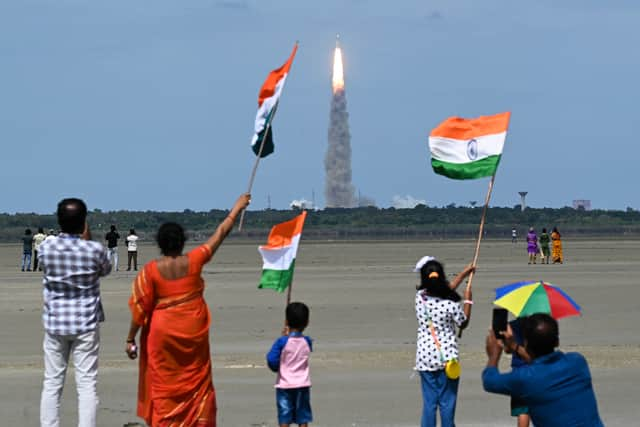ISRO: what does India's space agency do and what are its future goals?
and live on Freeview channel 276
It was previously known as The Indian National Committee for Space Research (INCOSPAR), set up by The Government of India in 1962 after scientist Vikram Sarabhai recognised the need for space research.
Advertisement
Hide AdAdvertisement
Hide AdIn 1969, INCOSPAR became ISRO. By 1972 it was brought under the Space Commission and the Department of Space.
With India growing its space research, what is the national space programme, and what are its future projects? Here is what you need to know.


What does ISRO do?
ISRO built its first satellite in 1975, which was launched by the Soviet Union.
By 1980, India launched satellite RS-1 on board its own launch vehicle known as SLV-3. This made India the seventh country capable of undertaking orbital launches.
Advertisement
Hide AdAdvertisement
Hide AdIts purpose is all space-based applications like reconnaissance, communications and research. It undertakes the design and development of space rockets, and satellites to explore upper atmosphere and deep space exploration missions. ISRO also has incubated its technologies in India's private space sector, boosting its growth. Many of ISRO's spin-off technologies have also founded crucial innovations for India's engineering and medical industries.
In 2008, India launched 11 satellites, including nine from other countries, and went on to become the first nation to launch 10 satellites on one rocket. ISRO has put into operation two major satellite systems: the Indian National Satellite System (INSAT) for communication services, and the Indian Remote Sensing Programme (IRS) satellites for management of natural resources.
India is world-leading in its satellite programmes and currently operates one of the largest constellations of active communication and earth imaging satellites for military and civilian uses.
In regards to human spaceflight, the first proposal was first discussed in 2006, By 2007, trials for crewed space missions began, with the first trial being successful. This later led to a budget of 2009, the Indian Space Research Organisation proposed a budget of ₹124 billion in 2009.
Advertisement
Hide AdAdvertisement
Hide AdHowever, this project was put on the back burner, and it was announced that a human spaceflight will be launched by 2022 - this has been delayed to 2025.
ISRO is headquartered Bangalore, Karnataka, and its Chairman is Sreedhara Somanath.
ISRO's current and future projects
India's space programme also includes a series of lunar exploitation spacecraft, known as the Chandrayaan programme.
Chandrayaan-1 was India's first mission to the Moon in 2008 - which was hailed as a success.
Advertisement
Hide AdAdvertisement
Hide AdIts second lunar mission, in 2019 - known as Chandrayaan-2, was more ambitious and included an orbiter, a lander and a rover. However, the lander deviated from its intended trajectory and was lost seconds before touchdown was expected. This was caused by a software glitch.
Chandryaan-3 is India's second attempt to soft-land on the Moon after the partial failure of Chandrayaan-2. The mission will only include a lander-rover set and will communicate with the orbiter from the previous mission. It is expected to land on 23 August and seems "healthy" after sending back its first pictures.
India also went to Mars. It's Mars Orbiter Mission (MOM) launched into orbit in 2013, and entered Mars orbit on 24 September 2014.
India became the first country to have a space probe enter Mars orbit on its first attempt - and it was completed at a record low cost of $74 million.
Advertisement
Hide AdAdvertisement
Hide AdIts future goals include developing and operationalising more powerful and less pollutive rocket engines. There are also plans to develop electric and nuclear propulsion for satellites and spacecraft to reduce their weight and extend their service lives.
Comment Guidelines
National World encourages reader discussion on our stories. User feedback, insights and back-and-forth exchanges add a rich layer of context to reporting. Please review our Community Guidelines before commenting.
